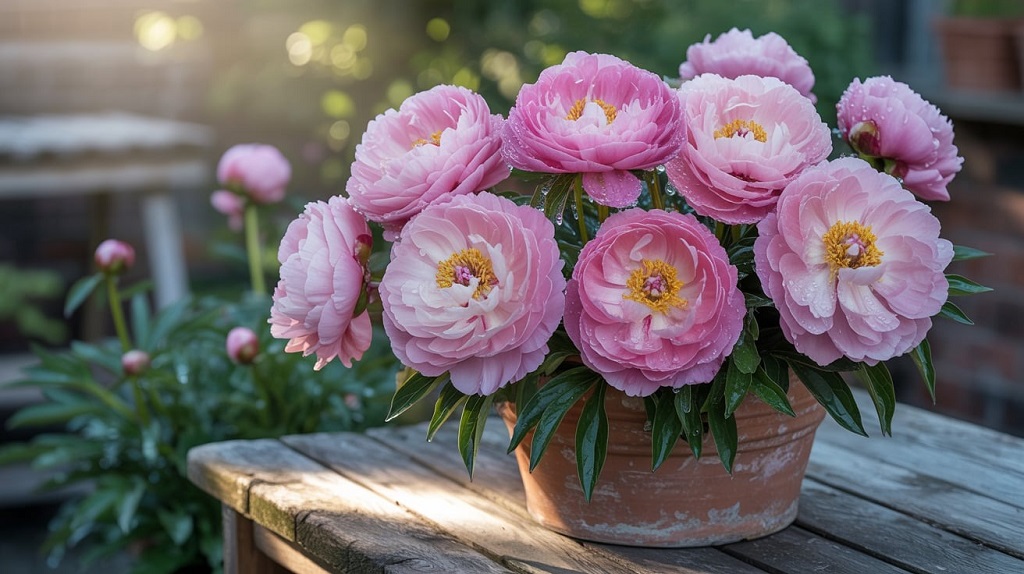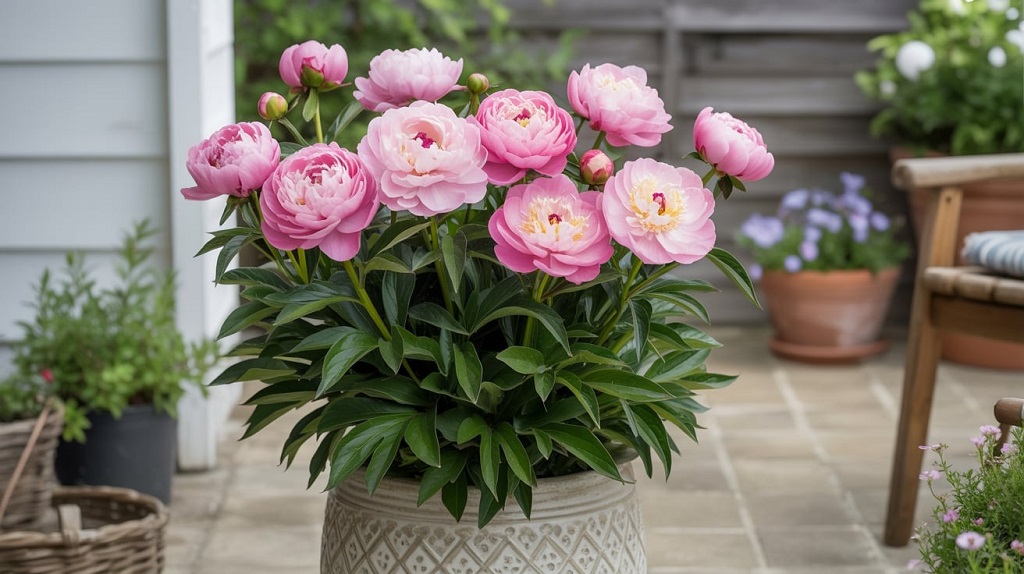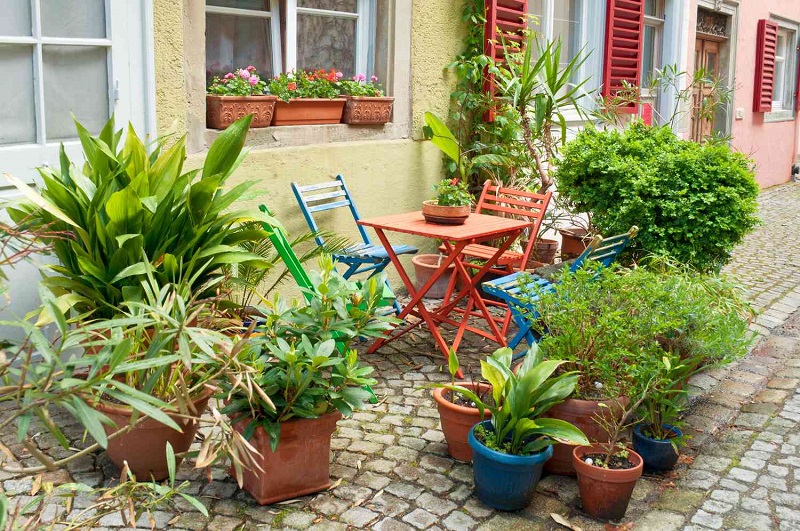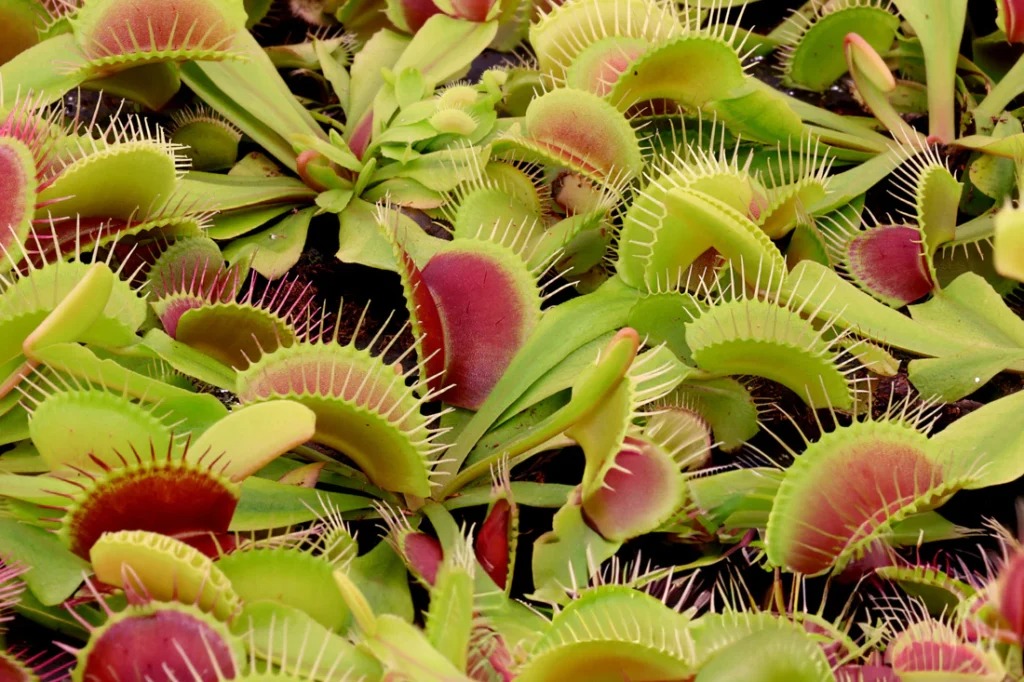Picture this: you’re admiring your neighbor’s stunning container Peony gardening, with their massive, fragrant blooms creating a spectacular spring show. But there’s a problem – you don’t have a traditional garden bed, or perhaps your soil conditions aren’t ideal for these beloved perennials. Does this mean you have to give up on your peony dreams? Absolutely not! The answer to whether you can grow peonies in pots is a resounding yes, and this comprehensive guide will show you exactly how to succeed.
Understanding Peonies: The Foundation of Container Success
Peonies are long-lived perennial flowers that have captured gardeners’ hearts for centuries. These robust plants typically fall into three main categories: herbaceous peonies, tree peonies, and intersectional (Itoh) peonies. Each type has unique characteristics that affect their suitability for container cultivation.
Herbaceous peonies die back to ground level each winter and regrow from their root system in spring. Tree peonies maintain woody stems year-round and can grow quite large. Intersectional peonies combine traits from both types, offering excellent container potential with their manageable size and spectacular blooms.
The key to successful peony container gardening lies in understanding their specific needs. Peonies require well-draining soil, adequate root space, and proper winter protection when grown in pots. They also need a period of winter chilling to bloom properly, making them suitable for most temperate climates.
Choosing the Right Peony Varieties for Pot Cultivation
Not all peony varieties are equally suited for container growing. Compact and dwarf cultivars perform best in pots, as they require less root space and are easier to manage. Some excellent choices for container gardening include:
Herbaceous Peonies for Containers:
- ‘Red Charm’ – A striking early bloomer with deep red flowers
- ‘Bowl of Beauty’ – Features pink outer petals with cream centers
- ‘Paula Fay’ – A semi-double pink variety with excellent container performance
- ‘Coral Charm’ – Opens coral and fades to yellow, perfect for smaller spaces
Tree Peonies for Pots:
- ‘High Noon’ – A yellow tree peony that stays relatively compact
- ‘Black Panther’ – Deep burgundy flowers on manageable plants
- Japanese tree peony varieties often work well in large containers
Intersectional Varieties:
- ‘Bartzella’ – Yellow blooms with excellent vigor
- ‘Cora Louise’ – White petals with burgundy flares
- ‘Julia Rose’ – Multi-colored blooms that change throughout the season
When selecting varieties, consider the mature size, bloom time, and cold hardiness requirements for your growing zone.
Essential Container Requirements for Growing Peonies
The foundation of successful peony container gardening starts with choosing the right pot. Size matters significantly when growing these substantial perennials. A minimum container size of 20-24 inches in diameter and at least 18 inches deep is recommended for most peony varieties. Tree peonies and larger herbaceous types may require even larger containers, up to 30 inches in diameter.
Drainage is absolutely critical for peony health. Containers must have multiple drainage holes to prevent waterlogged conditions that can lead to root rot. Consider drilling additional holes if your chosen pot doesn’t have adequate drainage.
Material choice affects both plant health and maintenance requirements. Terra cotta and ceramic pots provide excellent drainage and root insulation but can crack in freezing temperatures. Plastic and resin containers are lightweight and frost-resistant but may require additional drainage considerations. Wooden containers offer natural insulation and attractive aesthetics but need regular maintenance to prevent deterioration.
Soil Mix and Planting Techniques
Creating the perfect growing medium is crucial for container peony success. Standard potting soil alone isn’t sufficient – peonies need a well-draining, nutrient-rich mixture that provides adequate support for their extensive root systems.
Prepare your container soil mix using:
- 40% high-quality potting soil
- 30% compost or aged manure
- 20% perlite or coarse sand for drainage
- 10% bark chips or coconut coir for structure
This mixture provides excellent drainage while retaining adequate moisture and nutrients. The pH should be slightly alkaline to neutral (6.5-7.0), as peonies prefer these conditions.
When planting, timing is essential. Fall planting (September through November) allows roots to establish before winter dormancy. Plant peony roots with the growing eyes (pink or red buds) positioned 2 inches below the soil surface. Planting too deep can prevent blooming, while planting too shallow may damage the crown during winter.
Seasonal Care and Maintenance
Spring Care: As new growth emerges, gradually increase watering and begin regular fertilization. Apply a balanced, slow-release fertilizer when shoots are 2-3 inches tall. Monitor for pest issues, particularly aphids on young growth.
Summer Management: Maintain consistent moisture without overwatering. Deep, infrequent watering encourages strong root development. Deadhead spent blooms to direct energy back into the plant. Provide support for tall varieties to prevent stem damage.
Fall Preparation: Reduce watering as plants enter dormancy. Cut back herbaceous varieties to ground level after the first hard frost. Tree peonies should be pruned minimally, removing only dead or damaged wood.
Winter Protection: Container peonies need winter protection in cold climates. Move containers to an unheated garage, basement, or cold frame where temperatures remain between 32-40°F. Alternatively, group containers together and surround with insulating materials like straw or bubble wrap.
Watering and Fertilization Guidelines
Proper watering is one of the most critical aspects of container peony care. The goal is maintaining consistent moisture without creating waterlogged conditions. Check soil moisture by inserting your finger 2 inches into the soil – if it feels dry, it’s time to water.
During the growing season, water deeply but less frequently, allowing excess water to drain completely. Reduce watering frequency as plants approach dormancy in fall.
Fertilization should be moderate and consistent. Over-fertilizing can lead to excessive foliage growth at the expense of flowers. Apply a balanced fertilizer (10-10-10 or similar) in early spring, followed by a phosphorus-rich fertilizer after blooming to promote root development.
Organic options include compost, aged manure, and bone meal. These slow-release nutrients provide steady nourishment without the risk of burning delicate roots.
Common Challenges and Solutions
Poor Flowering: This is often caused by insufficient chilling hours, planting too deep, or container plants being too young. Peonies typically take 2-3 years to establish and bloom well in containers.
Pest Management: Aphids, scale insects, and spider mites can affect container peonies. Regular inspection and prompt treatment with insecticidal soap or neem oil helps control these issues.
Disease Prevention: Good air circulation and proper watering practices prevent most fungal diseases. Avoid overhead watering and ensure containers have adequate drainage.
Root Bound Plants: Peonies grown in containers eventually outgrow their space. Division and repotting every 4-5 years maintains plant health and vigor.
Benefits of Growing Peonies in Containers
Container cultivation offers several advantages over traditional garden planting. Mobility allows you to position plants for optimal sun exposure and move them for winter protection. Soil control ensures perfect growing conditions regardless of your native soil quality. Space efficiency makes peony growing possible in small gardens, patios, or balconies.
Container growing also facilitates easier pest and disease management, as you can isolate and treat problems more effectively. The elevated position of potted plants often provides better drainage and reduces issues with soil-borne diseases.
Read More Also: My dear little cabin, white and very Nordic
Long-term Success Strategies
Building a successful container peony garden requires patience and consistency. These long-lived plants reward careful attention with decades of spectacular blooms. Keep detailed records of planting dates, varieties, and care practices to optimize your approach over time.
Consider succession planting with varieties that bloom at different times to extend your flowering season. Early, mid, and late-season varieties can provide continuous color from late spring through early summer.
Plan for the future by understanding that container peonies will need periodic division and repotting. This natural process actually provides opportunities to expand your collection or share plants with fellow gardeners.
Read More Also: The Enduring Appeal of Stucco Walls
Conclusion: Your Container Peony Journey Starts Now
Growing peonies in pots is not only possible but can be incredibly rewarding for gardeners of all skill levels. With proper container selection, soil preparation, and seasonal care, you can enjoy these magnificent flowers even without traditional garden space.
The key to success lies in understanding peony requirements and adapting them to container conditions. Remember that patience is essential – these plants may take a few seasons to reach their full potential, but the spectacular results are worth the wait.






